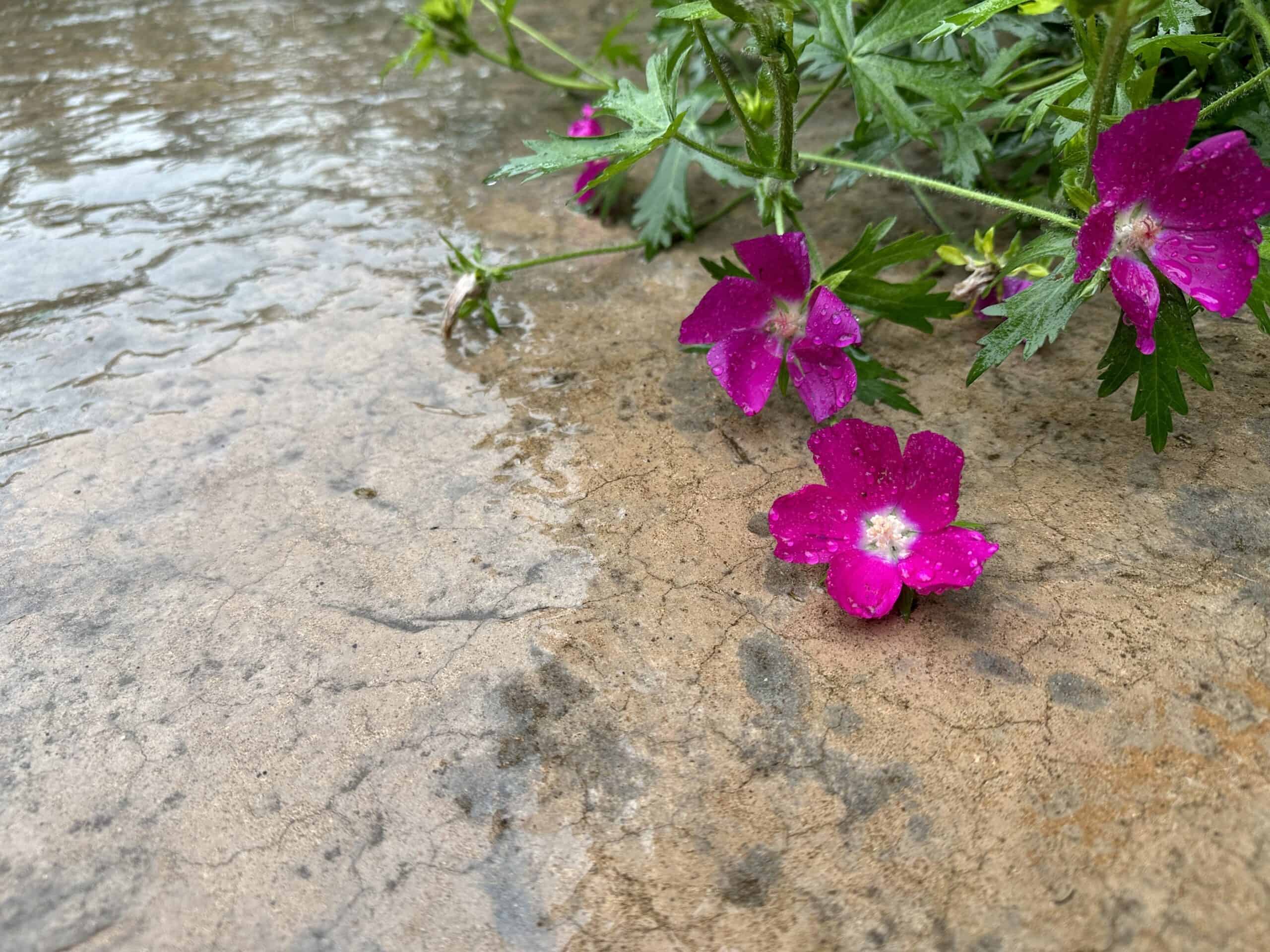Whither the Weather? Guest Post by Tim Burris
By Daniel Barringer, Preserve Manager.

Photo: Daniel Barringer
Now that we’ve had lots of rain in the last two weeks and rain is forecast for at least another week, I thought it was time to gain some perspective on the unusual May drought. I asked Natural Lands Preserve Manager (retired) and co-blogger Tim Burris to weigh in. Lately I’ve missed his commentary on precipitation from his years of monitoring at Mariton Wildlife Sanctuary. Here’s what he writes:
Let me talk a little bit about rainfall, or more accurately precipitation. I monitored precipitation at Mariton with a very accurate rain gauge for three decades. (When it snowed, I melted the snow to measure the liquid equivalent.) I kept records that I would refer to for trends, as well as specific data.
When we moved to the north side of the Kittatinny Ridge, I put up a high caliber gauge and have been monitoring it for close to a year. We are dry! Even with a few recent rains we will be dry for some time.
The rain we are getting now is wonderful, but we need to put things in context. We may be getting rain every other day for a while, but things have been so dry this year that it will take much more rain to make up for the deficit.
Consider this, as a rule of thumb we should receive about 4 – 5 inches of liquid equivalent precipitation per month, or around 55 inches per year. This year, I recorded 4.21 inches of precipitation in January here just north of Kittatinny Ridge. That’s good. February yielded 1.13 inches – concerning but don’t panic yet. March received 3.12 – that would have been nice if February hadn’t been so dry. In April, I recorded 4.61 inches – deceiving because most of that came in one day after a very dry April. May was when I really began to worry because we only received 0.28 inches of rainfall. May was one of the driest months on record and that should concern everyone. By the end of May, I had only recorded 13.35 inches of precipitation. (And that was more than my friends in the Lehigh Valley who exchange their data with me.)
June started out dry, but we have just recently begun to receive some much-needed rain. I received 2.42” on Monday, June 12 (which is about an inch more than my friends in the Lehigh Valley). I recorded another 0.38” from Wednesday’s rain. That brings the June total at mid-month to about 3.0 inches here.
For me locally, my total precipitation to date this year is 16.40 inches. Again, we should have around 27 inches of precipitation at the end of June, and to this point we have received less than 17 inches. So, we need to get another 10 inches of rain in the next two weeks to get close to average.
That is unlikely to happen, but we can make up precipitation during the summer and fall. Most of us recall how a dry spell extended well into the fall last year. Last year I received just 1.55” of rain for the entire month of July. I like to say that July can be the driest month, or it can be the wettest month. Wet Julys are usually the result of tropical weather systems (hurricanes) and come with their own concerns.
Now is a great time to install a rain barrel, or a rain garden. Back in the mid-1990’s we had several years with only 40” or less of precipitation for the entire year. Several people around Mariton had wells go dry on laundry day, or when they used a lot of water. We are only talking about six months at this point. But combined with a fairly dry 2022, and a possibly dry 2023 our aquifers can get strained. There is an old saying: “You don’t miss your water ‘til your well goes dry.” So, now is the time to start preparing.
I was glad to return from vacation and find Crow’s Nest green again, but I can’t help wishing that the rain was better distributed over time… it’s wet now, but I worry about the impact of the dry spell on this year’s growth and wild populations.
